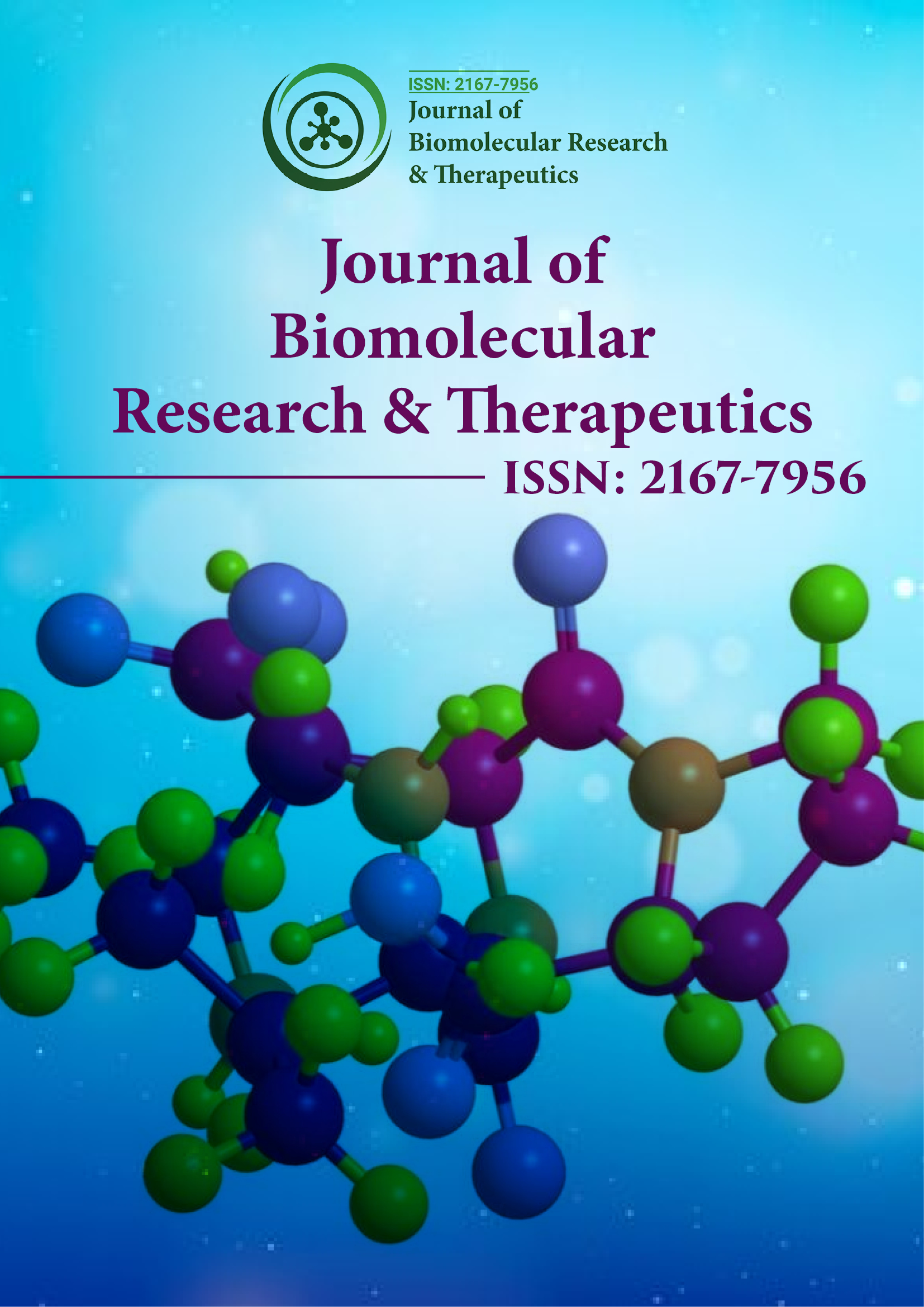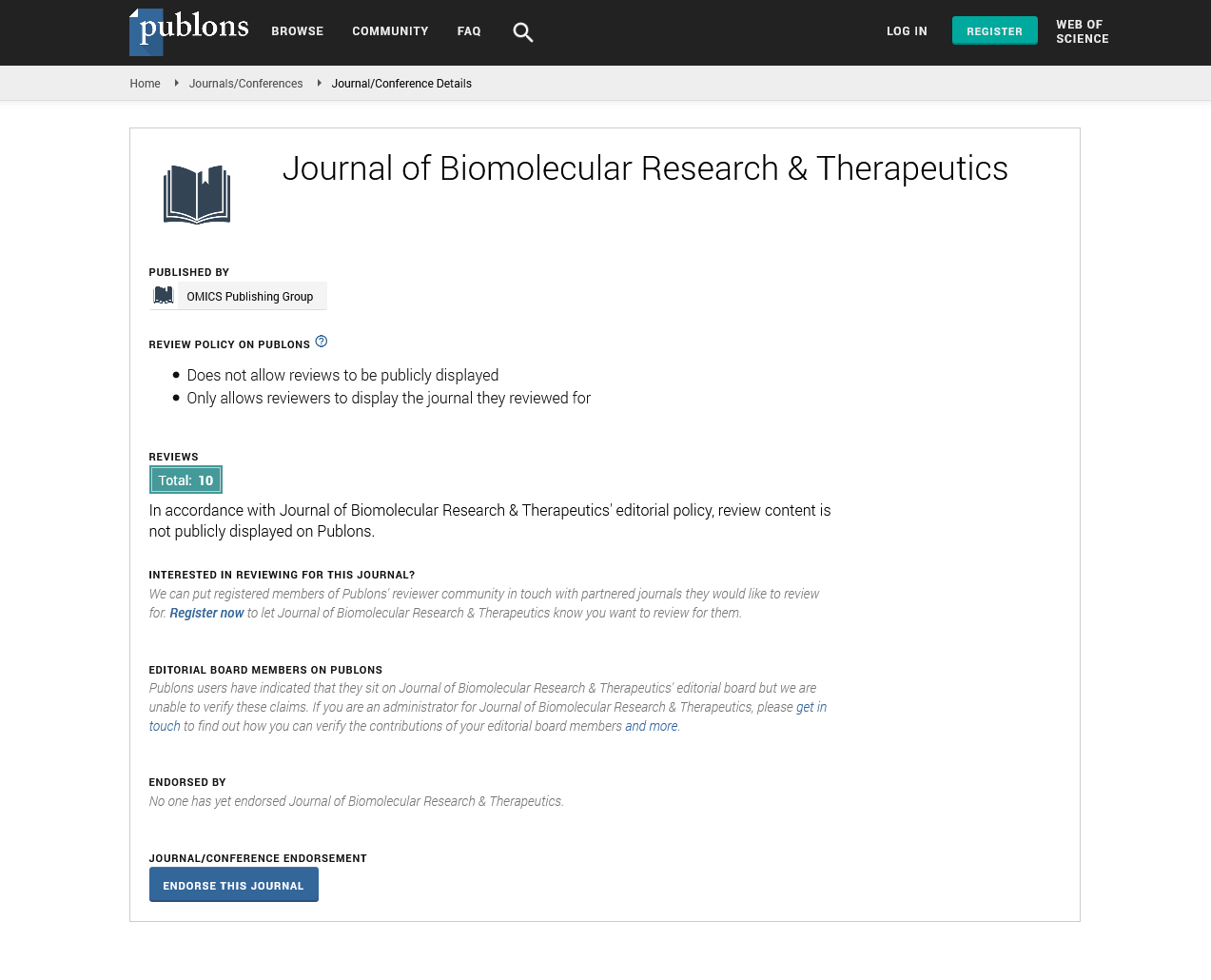Indexed In
- Open J Gate
- Genamics JournalSeek
- ResearchBible
- Electronic Journals Library
- RefSeek
- Hamdard University
- EBSCO A-Z
- OCLC- WorldCat
- SWB online catalog
- Virtual Library of Biology (vifabio)
- Publons
- Euro Pub
- Google Scholar
Useful Links
Share This Page
Journal Flyer

Open Access Journals
- Agri and Aquaculture
- Biochemistry
- Bioinformatics & Systems Biology
- Business & Management
- Chemistry
- Clinical Sciences
- Engineering
- Food & Nutrition
- General Science
- Genetics & Molecular Biology
- Immunology & Microbiology
- Medical Sciences
- Neuroscience & Psychology
- Nursing & Health Care
- Pharmaceutical Sciences
Perspective - (2022) Volume 11, Issue 1
Amino Acids and their Roles in Human Body
Adam Campbell*Received: 28-Dec-2021, Manuscript No. BOM-22-48191; Editor assigned: 31-Dec-2021, Pre QC No. BOM-22-48191; Reviewed: 14-Jan-2022, QC No. BOM-22-48191; Revised: 19-Jan-2022, Manuscript No. BOM-22-48191; Published: 26-Jan-2022, DOI: 10.35248/2167-7956.22.11.191
Abstract
Amino acids, are referred to as the building blocks of proteins, play many critical roles in your body.
Amino acids are needed for the processes like the building of proteins and synthesis of hormones and neurotransmitters. These amino acids need to know about essential amino acids, including how they function, possible food sources and the benefits of taking a supplement.
Amino acids contain nitrogen, carbon, hydrogen, oxygen and variable side chain groups. A human body needs different amino acids to function properly. All the amino acids are important but only 9 amino acids are classified as essential.
Keywords
Protein; Carbon; Hydrogen; Oxygen
Introduction
Amino acids are organic compounds containing amino and carboxylate Functional groups and side chains (R groups) specific for each amino acid. The elements contained in each amino acid are carbon (C), hydrogen (H), oxygen (O), and nitrogen (N). In addition, sulphur (S) is present in the side chain of cysteine, and methionine and selenium (Se) are present in the less common amino acid selenocysteine. As of 2020, more than 500 naturally occurring amino acids are known to make up the monomeric units of proteins, including proteins (although only 20 occur in the genetic code). Yes, selenocysteine is coded in a unique way).
The amino acids are formally named by the IUPAC-IUBMB Joint Committee on Biochemical Nomenclature according to the fictitious “neutral” structure shown in the figure. For example, the systematic name for alanine is 2-aminopropanoic acid, which is based on the formula CH3-CH (NH2) -COOH.
Types of amino acids
Those are
• Histidine
• Isoleucine
• Leucine
• Lysine
• Methionine
• Phenylalanine
• Threonine
• Tryptophan
Unlike non-essential amino acids, essential amino acids cannot be made by your body and must be obtained from your diet. The main sources of essential amino acids are animal proteins such as meat, eggs and poultry. When you eat Protein, it is broken down into amino acids and used to help the body in various processes such as building muscle and regulating immune function.
Conditionally Essential Amino Acids are non-essential amino acids these are considered to be essential only under specific circumstances such as illness or stress. Acids classified as Conditionally Essential. These are only considered mandatory under certain circumstances such as illness or stress.
Roles of Amino Acids in Human Body
The nine essential amino acids perform a number of important and varied jobs in your body.
Uses of amino acids
Phenylalanine is used for the neurotransmitters tyrosine, dopamine, epinephrine and norepinephrine. It performs a quintessential function within side the shape and feature of proteins and enzymes and the manufacturing of different amino acids.
Threonine: Threonine is a most important a part of structural proteins inclusive of collagen and elastin, which can be critical additives of the pores and skin and connective tissue. It additionally performs a function in fats metabolism and immune feature.
Tryptophan: Though frequently related to inflicting drowsiness, tryptophan has many different functions. It`s had to keep right nitrogen stability and is a precursor to serotonin, a neurotransmitter that regulates your appetite, sleep and mood.
Methionine: Methionine performs a critical function in metabolism and detoxification. It`s additionally essential for tissue increase and the absorption of zinc and selenium, minerals which might be critical in your health.
Leucine: Like valine, leucine is a branched-chain amino acid this is vital for protein synthesis and muscle repair. It additionally enables adjust blood sugar levels, stimulates wound restoration and produces increase hormones.
Isoleucine: The ultimate of the 3 branched-chain amino acids, isoleucine is worried in muscle metabolism and is closely focused in muscle tissue. It`s additionally critical for immune feature, haemoglobin manufacturing and electricity regulation.
Lysine: Lysine performs foremost roles in protein synthesis, hormone and enzyme manufacturing and the absorption of calcium. It`s additionally critical for electricity manufacturing, immune feature and the manufacturing of collagen and elastin.
Histidine: Histidine is used to supply histamine, a neurotransmitter this is critical to immune response, digestion, sexual feature and sleep-wake cycles. It`s vital for preserving the myelin sheath, a defensive barrier that surrounds your nerve cells situations.
Significance of amino acids
Kwashiorkor and marasmus are examples of extra excessive medical issues because of malnutrition and insufficient consumption of crucial amino acids. Kwashiorkor is a shape of malnutrition characterised through peripheral edema, dry peeling pores and skin with hyperkeratosis and hyperpigmentation, ascites, liver malfunction, immune deficits, anemia, and comparatively unchanged muscle protein composition. It outcomes from a weight- reduction plan with inadequate protein however ok carbohydrates. Marasmus is a shape of malnutrition characterised through losing because of insufficient protein and usual insufficient caloric consumption.
Conclusion
Inadequate supply of essential amino acids, such as vomiting and loss of appetite, can lead to clinical symptoms. These symptoms include depression, anxiety, insomnia, malaise, weakness, and adolescent growth retardation. These symptoms are mainly caused by a lack of protein synthesis in the body due to a deficiency of essential amino acids. The required amount of amino acids is needed to produce neurotransmitters, hormones, muscle growth, and other cellular processes.
Citation: Campbell A (2022) Amino Acids and their Roles in Human Body. J Biomol Res Ther. 11:191.
Copyright: © 2022 Campbell A. This is an open-access article distributed under the terms of the Creative Commons Attribution License, which permits unrestricted use, distribution, and reproduction in any medium, provided the original author and source are credited.

